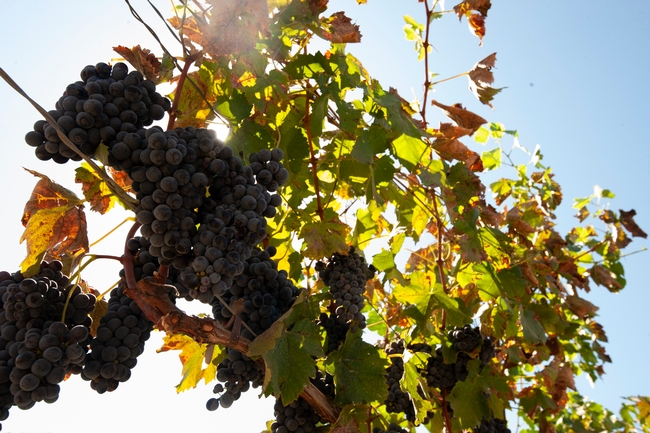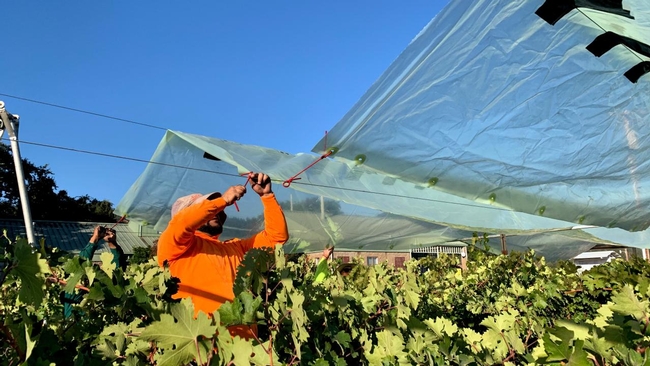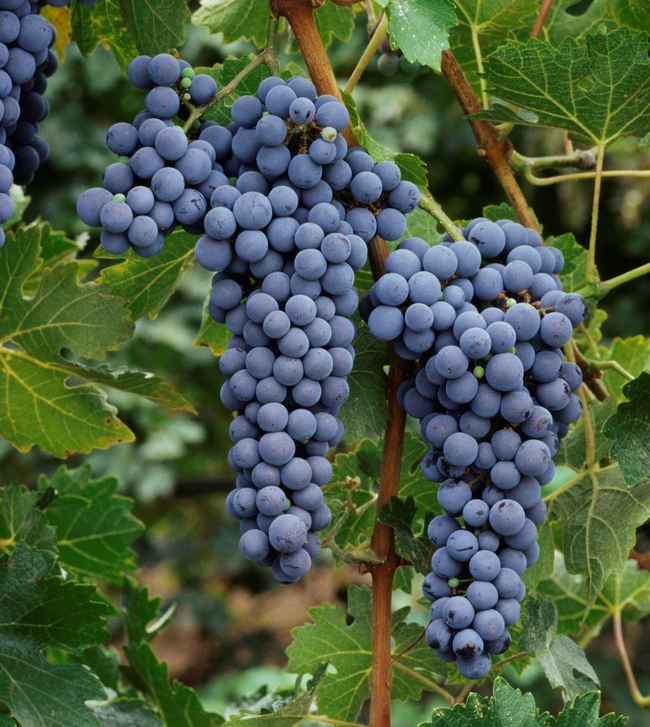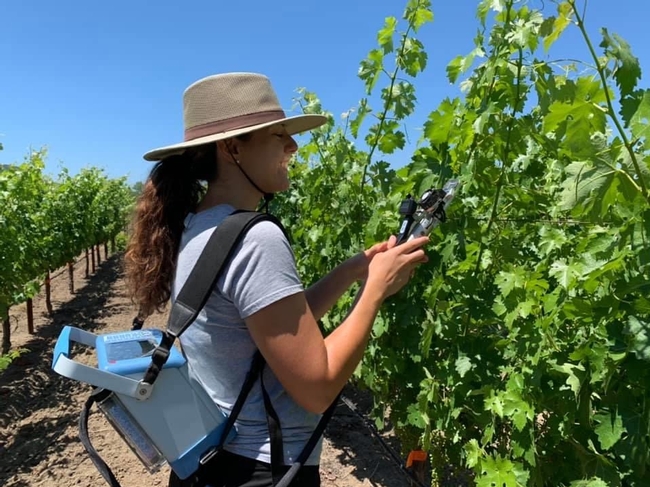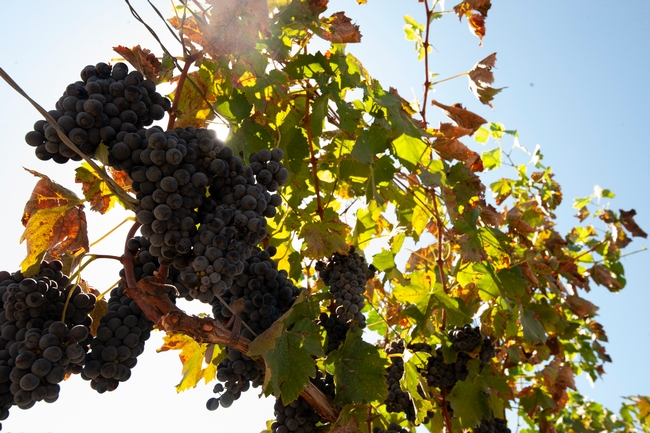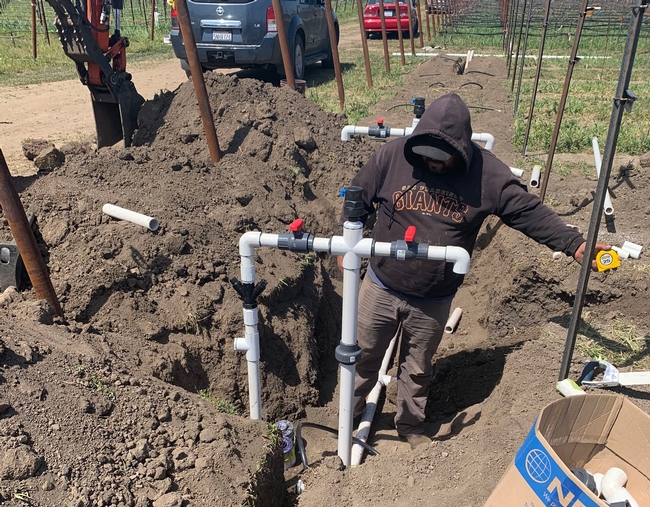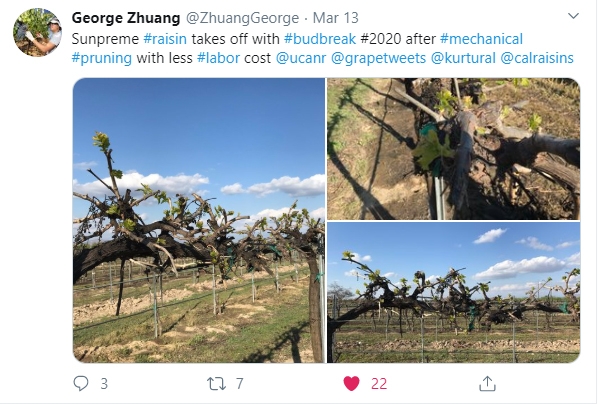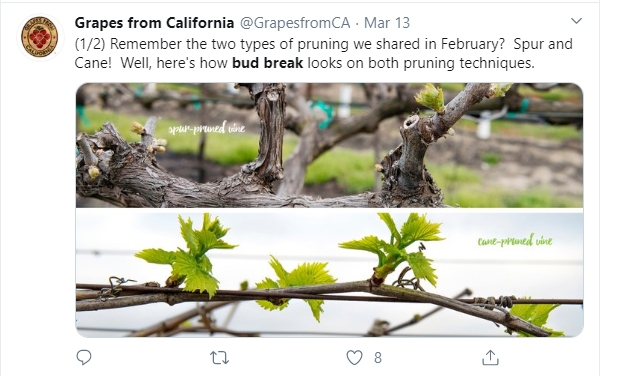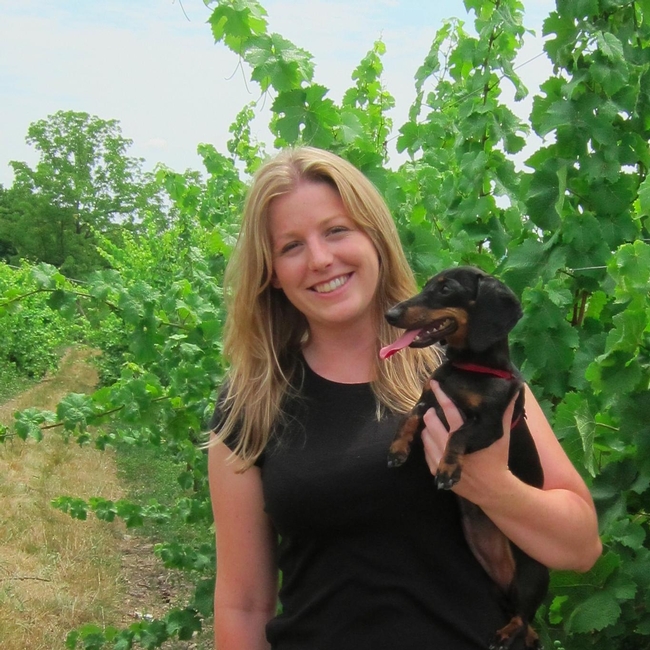Posts Tagged: viticulture
Researchers pinpoint drought-resistant traits in grape rootstocks
Findings could help wine industry adapt to climate change
Scientists at UC Davis have identified new root traits that help grapevines resist drought. The findings, published in the journal Annals of Botany, could speed up the development of grape rootstocks that protect vines from dry conditions, helping the grape and wine industry adapt to climate change.
The research, led by Department of Viticulture and Enology Assistant Professor Megan Bartlett, comes as 80% of California is experiencing extreme drought.
Most grapevines are not rooted directly into the ground but are instead grafted onto a rootstock, which forms the underground part of the plant and supports growth above ground.
“Rootstocks are an important tool to manage water stress,” Bartlett said. “Our goal was to identify traits that make rootstocks drought tolerant, so that grape breeders can amplify these traits in new varieties.”
Root cell traits
The study focused on traits measuring drought responses in living root cells.
The research specifically identified capacitance – which measures how much roots shrink as they dehydrate – as an important trait for drought tolerance.
“The water that enters the roots has to cross through a band of living cells to reach the xylem – the network of pipes that carries water up to the leaves,” said Bartlett. Most research has focused on xylem traits, but the living cells are often the first to be damaged during drought.
Water stress can shrink, deform, or even kill the living cells, causing the roots to shrivel away from the soil and lose access to the remaining soil water. Vines are then unable to replace water lost to evaporation and are forced to close the stomata – the small pores on the leaves that take in carbon dioxide for photosynthesis – to prevent severe dehydration. But closing the stomata stops photosynthesis and starves the vine of the sugars it needs to grow and ripen fruit.
This study is the first to test whether traits measuring root shrinkage and cell collapse can capture differences in rootstock drought tolerance.
Cell traits and drought tolerance
The researchers grafted Chardonnay onto eight commercial rootstocks. Half of the vines experienced drought conditions and half were kept well-watered in a greenhouse experiment.
The study found the eight rootstocks were surprisingly diverse and varied widely in their traits. The rootstocks also appeared to acclimate to drought by changing their traits in that the droughted vines were less susceptible to shrinkage and cell collapse than the well-watered vines.
Among the traits, capacitance was especially important for drought tolerance. The rootstocks with a lower capacitance (less root shrinkage) were better able to maintain photosynthesis during drought than other rootstocks.
“This research gives us a new trait to target for breeding more drought tolerant rootstocks,” study co-author and Ph.D. student Gabriela Sinclair said.
The research was supported by the American Vineyard Foundation, UC Davis, and by donations to the department from the Rossi family. Researchers at the University of British Columbia and the USDA-ARS Crops Pathology and Genetics Research Unit also contributed to the study.
Increasing temperatures led to better-tasting wine grapes, but for how long?
Study shows sugar, color content should be watched
Warming temperatures over the past 60 years have led to increased wine quality, but a new study looking at sugar and color content in grapes indicates the industry may be facing trouble if trends continue, according to collaborative research out of the University of California, Davis, and University of Bordeaux.
“Quality has increased steadily up to now,” said lead author Kaan Kurtural, a professor of viticulture and enology and an extension specialist at UC Davis. “We just don't know the tipping point.”
Kurtural's research, published in the journal OENO One, focuses on two renowned wine regions — Napa Valley and Bordeaux, France.
Researchers looked at ripening, grape quality and temperature data over six decades in both regions and then confirmed the findings with a five-year trial in Napa. They also consulted wine ratings in publications like Wine Spectator to gauge consumer demand.
One key finding: As temperatures exceeded what was considered the optimal level for quality, the grapes produced better wines.
“Previous research had few field data, but a record of assumptions,” said Kurtural.
Other quality factors at play
Temperature is a factor, but the paper suggests that sugar and color content should not be discounted. The authors also identified a biomarker that affects taste, color and other factors that can be the bellwether for climate change in red-skinned wine grapes.
“Temperature is always there,” he said. “Temperature is not your bellwether.”
Higher temperatures can harm grape composition, including color, taste and aroma. Researchers examined pigment and sugar content of five California vintages of cabernet sauvignon, finding that as the grapes got sweeter the skin and color deteriorated.
The degradation of these quality-related compounds and the observed plateaus of wine quality ratings suggests there can be too much of a good thing.
Researchers have long theorized that increasing temperatures from climate change would lead to shifts in wine-growing regions, opening up some new areas for vineyards and making others unsustainable.
That shift could be a boon to some economies and devastating to others, something the industry should watch.
“Since the 1980s, grapes got riper and they were able to make better flavor and color compounds,” Kurtural said. “Are we going to lose this or adapt more?”
Gregory A. Gambetta with the University of Bordeaux is a corresponding author on the paper.
For more information:
- Kaan Kurtural, Viticulture and Enology, cell 707-200-5378, skkurtural@ucdavis.edu
- Amy Quinton, UC Davis News and Media Relations, cell 530-601-8077, amquinton@ucdavis.edu
- Emily C. Dooley, College of Agricultural and Environmental Sciences, cell 530-650-6807, ecdooley@ucdavis.edu
Coastal grape growers can use less water during drought
Study finds using less doesn't compromise quality
California grape growers in coastal areas can use less water during times of drought and cut irrigation levels without affecting crop yields or quality, according to a new study out of the University of California, Davis.
The findings, published today (Sept. 1) in the journal Frontiers in Plant Science, show that vineyards can use 50% of the irrigation water normally used by grape crops without compromising flavor, color and sugar content.
It sheds new light on how vineyards can mitigate drought effects at a time when California is experiencing a severe water shortage and facing more extreme weather brought on by climate change, according to lead author Kaan Kurtural, professor of viticulture and enology and an extension specialist at UC Davis.
“It is a significant finding,” Kurtural said. “We don't necessarily have to increase the amount of water supplied to grape vines.”
Growers will also be able to use this information to plan for the next growing season. “Everybody's worried about what's going to happen next year,” he said.
Kurtural and others from his lab studied irrigation and cabernet sauvignon grape quality at a research vineyard in Napa Valley over two growing seasons, a rainy one in 2019 and a hyper-arid one in 2020.
They focused on crop evapotranspiration, which was the amount of water lost to the atmosphere from the vineyard system based on canopy size. The weekly tests used irrigation to replace 25%, 50% and 100% of what had been lost by the crop to evapotranspiration.
Researchers found that replacing 50% of the water was the most beneficial in maintaining the grape's flavor profile and yield. The level of symbiotic arbuscular mycorrhizal fungi, which help grapevines overcome stresses such as water deficits, was also not compromised. And the water used to dilute nitrogen application was also reduced, making the process more environmentally friendly.
The water footprint for growing grapes also decreased. For both the 25% and 50% replacement levels, water use efficiency increased between 18.6% and 29.2% in the 2019 growing season and by 29.2% and 42.9% in the following dry year.
While focused on cabernet sauvignon, most red grapes will respond similarly, he said.
“In the end, drought is not coming for wine,” Kurtural said. “There doesn't need to be a tremendous amount of water for grapes. If you over irrigate in times like these, you're just going to ruin quality for little gain.”
Members of Kurtural's lab — Nazareth Torres, Runze Yu, Johann Martinez-Lüscher and Evmorefia Kostaki — are also credited as authors.
University of California Agriculture and Natural Resources provided partial funding.
For more information, contact:
- Kaan Kurtural, Viticulture and Enology, skkurtural@ucdavis.edu
- Amy Quinton, UC Davis News and Media Relations, amquinton@ucdavis.edu
- Emily C. Dooley, College of Agricultural and Environmental Sciences, ecdooley@ucdavis.edu
Early budbreak could be a sign of climate change
A welcome sign of spring each year for grape producers is budbreak, the moment when tiny buds on the vine start to swell and green leaves appear. Budbreak varies by region, variety and even vineyard topography, but in Sonoma County, unseasonably warm weather caused buds to burst early, reported Bill Swindell in the Press-Democrat.
“Perhaps it's the new normal,” said Jen Walsh, the winemaker at La Crema Winery in the Russian River Valley, commenting about long-term change due to global warming.
The Carneros region that borders San Pablo Bay is typically the first wine appellation to experience bud shoots on grapevines, given its milder climate, said Rhonda Smith, UC Cooperative Extension viticulture advisor in Sonoma County. In addition, hillside vineyard areas in the county with south- and west-facing slopes also usually are on the early side because of their longer sun exposure.
There is a downside to early budbreak. The vines are susceptible longer to a potential spring frost, which could harm opening buds and young shoots.
Below are recent tweets heralding the 2020 budbreak around California.
Farm advisor Lindsay Jordan creating options for vineyard sustainability
UC Cooperative Extension advisor Lindsay Jordan is growing 56 varieties of grapes at the UC Kearney Agricultural Research and Extension Center to see how varietals from other parts of the world flourish or fail, reported Sydney Maki in the Fresno Bee.
The front-page story provided an overview of Jordan's career, research plans and personality.
“My love of wine drives a lot – what can I say,” Jordan said. “I don't know about you, but I want to keep drinking wine until the day I die, so I really want to do my part to ensure the sustainability of drinking California wine.”
As part of the project, Jordan is looking for grapevines that thrive in the valley heat, produce a large crop and develop berries with color, flavor and acidity needed for fine wines.
"I won't declare any winners," Jordan said. "I'll say I have favorites, and I definitely have losers that I would not recommend.
The project was started by James Wolpert, a retired UC Cooperative Extension viticulture specialist, and continued by Matthew Fidelibus, UCCE viticulture specialist based at Kearney. Jordan took over the project a year and a half ago.
Finding the next cabernet sauvignon or chardonnay would be a home run, Fidelibus said. However, the data supplied by the project are also important in providing farmers and wineries the research and background to expand their own vineyards.
“If any of these varieties are going to be useful, it's important that the wineries are interested and comfortable with them,” Fidelibus said. “The grower can't grow varieties without the assurance that a winery is going to use them.”

